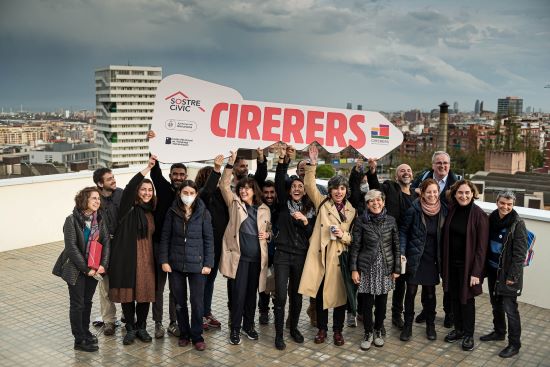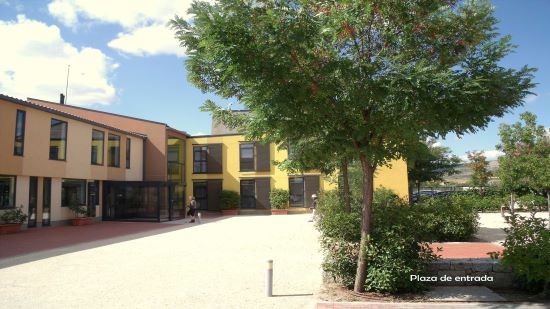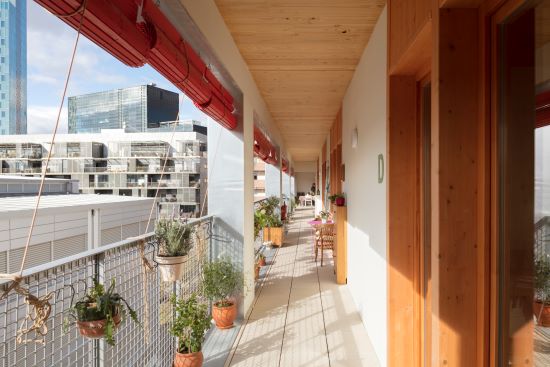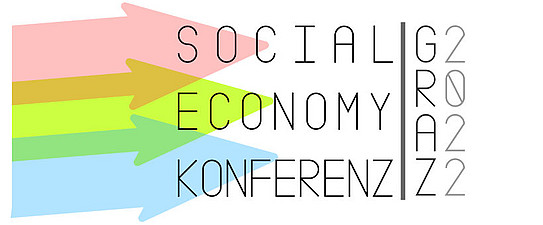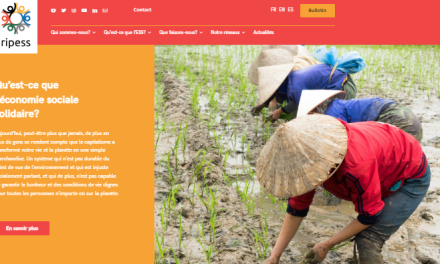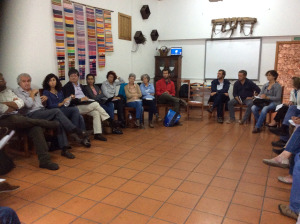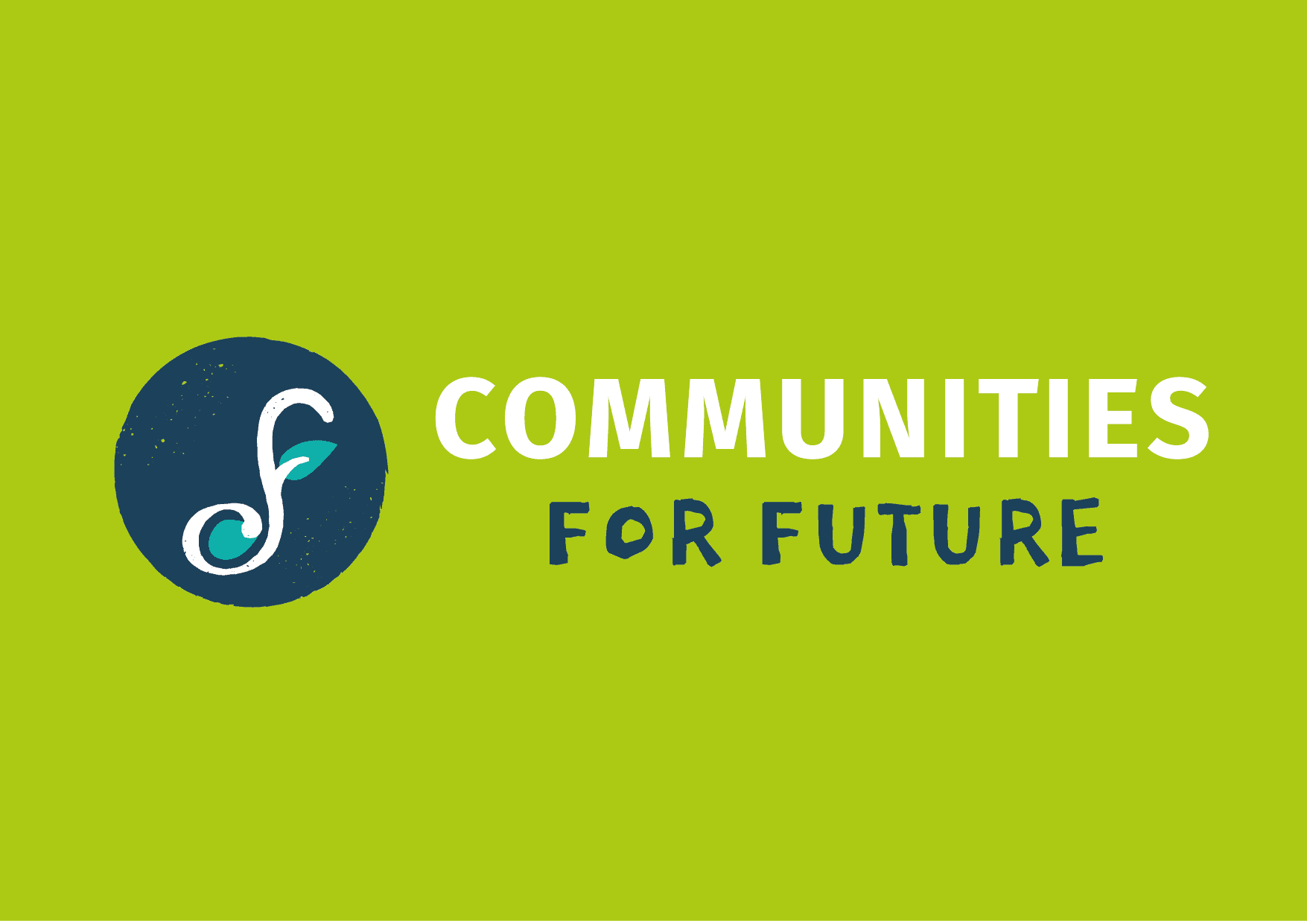Article by Rubén Méndez, Technical Secretariat of grupo Vivienda Cooperativa in cession of use in REAS Red de Redes
- Cooperative housing in transfer of non-profit use is configured as a third way of solution to the problem of access to housing
- Barcelona, and Catalonia as a whole, represent a benchmark in innovation in social housing with public-cooperative collaboration
- Initiatives of the Social and Solidarity Economywith Trabensol and Entrepatios as references in Madrid, or La Borda, La Diversa, Princesa49, La Balma and Cirerers in Barcelona, driven by La Dinamo and Civic Sostre
- Collective empowerment generates more accessible, sustainable, bold and transformative housing proposals, with numerous international recognitions
For decades, inspiring housing experiences have emerged in central and northern Europe that have provided important solutions for improving housing accessibility and fostering communities of mutual support and resilience. In recent years the southern territories have taken the baton and are experiencing the emergence of cooperative models of housing in cession of use. They are articulated for the development of community projects such as cohousing, cohousing or collaborative housing, with proposals with multiple impacts and the challenge of implementing the culture of public-cooperative collaboration to influence sectors with difficulties.
In recent years, a small but significant revolution in the housing model, as expected as it is unknown to the general public, is flourishing with vigor. The first experiences, arising from the real estate crisis, have become icons of socio-community and architectural configuration, and also references in other aspects such as care, sustainability and efficiency. The impact of these projects, sheltered from the reflection in the media, increases the interest of public administrations in cohousing in a cooperative regime in transfer of non-profit use. They are interested in knowing their characteristics and analyzing the keys that need to be addressed to untangle the current regulatory configurations that hinder innovation in social housing of tenure and cooperative management.
These new community proposals represent a paradigm shift in the Spanish State with respect to traditional housing cooperatives, which have been articulated as a resource for financing and real estate development for subsequent sale in the free market. The new cooperative housing, with the self-promotion of the entire cooperative project tailored to the human group, is proposed as a social structure for the management of community life, maintaining collective ownership and with cession of use of spaces, both for intimate and collective use, and provide services to its members. This approach contributes to the generation of a stock of properties that are left out of price increases and speculative interests of the market.
They are distributed throughout the geography, being able to be found both in the urban, peri-urban or rural areas, with the Senior variants for the elderly, with special attention to dependence and care, and the so-called intergenerational, as well as specific groups. The territories are in varying degrees of development, with Catalonia at the forefront, gradually overcoming all the regulatory, financial, urban and constructive difficulties, in addition to those of the configuration of a human group in development and evolution, towards more participatory, solidary, effective and satisfactory governance models.
Among the initiatives, those in the field of Social and Solidarity Economy stand out, with pioneering projects aimed at the elderly such as Trabensol, in a rural setting in Torremocha del Jarama. Or the urban experience of Entrepatios in the neighborhood of Usera in Madrid with multiple recognitions that demonstrate the potential of an ecosocial model in a very complex context. In Catalonia, with great profusion in the city of Barcelona, we can find numerous examples such as La Borda, an emblematic case and recently awarded in the category of emerging architecture by the Mies Van der Rohe, the most important awards given in the European Union. It is accompanied by new promotions such as La Diversa, Princesa49, La Balma and Cirerers promoted by the foundation La Dinamo and the cooperative Civic Sostre, members of the Xarxa d’Economia Solidària (XES).
The human groups that lead this type of buildings, accompanied by technical teams specialized in these new models, design spaces to promote encounter, cohesion and mutual support, as well as to carry out activities that exceed the possibilities of the usual private homes. Thanks to this dynamic of empowerment, a breeding ground is generated that facilitates the creation of collective and entrepreneurial initiatives, such as solidarity funds, consumer and food groups, energy communities, joint services, growth and training activities, accompaniment in parenting and education, health promotion, care and assistance to dependency, etc.
From REAS Network of Networks and the territorial networks that make it up, as referents of the social and solidarity economy, they have been articulating a structure of networking that has raised common bases, preparing learning days and sectoral meetings, making proposals that facilitate the creation of new projects, political and institutional dialogue for regulatory development, measures to promote and disseminate the model.
For more information: Ruben Mendez, Technical Secretariat of the State Working Group of Cooperative Housing in cession of use in REAS Network Network vivienda@reasnet.com / economiasolidaria.org/vivienda




